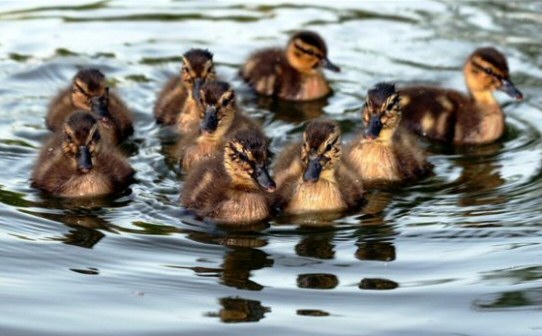The river Thames is probably the most famous in the entire United Kingdom. The meandering shape of the section which runs through the middle of the capital is iconic, thanks largely to its ubiquity on British television screens in the opening titles of EastEnders. And so many tourists rush every year to catch a glimpse of it, with Thames river cruises being more popular than they ever have been. If you’d like to enjoy a Thames afternoon tea cruise, you can even do so – thereby enjoying one British icon while floating atop another.
But human life isn’t the only sort of life for which the Thames is hugely significant. There exists a stunning variety of plant and animal life just beneath the surface of the river, living alongside humans without them ever noticing. Let’s take a look at some of the life that lurks in the Thames.
Sturgeon
There are twenty-seven species of fish which go by the name ‘sturgeon’, though just a few of them live in the Thames. They’re easily recognisable thanks to their shark-like tail fins, and they have a long, smooth, scaly body. In terms of longevity, they’re actually quite similar to human beings – they live for around sixty years, and don’t spawn until they’re between fifteen and twenty. When she spawns, a female is capable of releasing several million eggs – of which just a few will be fertilised. The fertilised eggs will stick to the bottom of the river for a week or two before hatching into larval sturgeons, which will grow to around twenty centimetres long. Birth and adolescence tends to take place in smaller tributary rivers; after this point, however, the catfish will head back into the Thames proper to live out their lives.
Trout
Trout are a sort of fish closely related to the salmon. They’re oily in much the same way. Though there are no laws forbidding it, it’s generally considered untoward to eat the fish you catch in the Thames. Their numbers are not sufficient to support widespread fishing.
Trout come in several varieties, including both freshwater and saltwater. Sea trout will venture upriver during spawning season, while brown trout tend to live their lives out there. Rainbow trout are also spotted sometimes, but these tend to be escapees from lakes and farms.
Salmon
Salmon are an ever-present on British dinner tables, thanks to their delicious taste and nutritional value. The fish used to be widespread in the Thames, but thanks to overfishing, their numbers have decreased markedly. They migrate up the river during winter, and so you’ll find them further from the estuary during snowy weather.
Wels Catfish
The wels catfish is a large species of catfish that was first introduced into western Europe as a sport fish. It lives on insects, worms, crustaceans and other fish. The larger ones are more ambitious, and subsist on rodents, ducks and even each other. They first came to be introduced into the Thames in the 1930s, in order to provide fisherman with something to catch. They were able to dominate the ecosystem, and grow to often extraordinary sizes. The largest specimens recorded are several metres long and weigh more than several adult men; but the average catfish tends to be a great deal smaller – though with the average specimen being more than four feet long, they’re not exactly small.
Eels
While eels do live in the Thames, their numbers have steadily dwindled in recent years, with a five-year-decline of around 98% being recorded in 2010. Eels tend to migrate from the sea into European rivers over the course of their lifespans, before eventually making the return journey to give birth and then die.
Cetacea
You’ll also find a raft of cetacea in the Thames – though they’re not quite as common as trout and other fish. Pods of porpoise and dolphin occasionally travel up the Thames in search of a bite to eat. A bottlenose whale even decided to travel up the river once – providing wildlife spotters with something to talk about for years afterwards.
Birds
Of course, wherever fish gather, there will be predators to hunt for them. Besides human beings, the most obvious of these predators are birds. You’ll find kingfisher and herons up and down the Thames, along with swans and geese.
Otters
Birds aren’t the only predator to live and thrive in and around the Thames. You’ll often see otters in London, which is an encouraging sign as it suggests that the fish population in the river is in excellent health.

